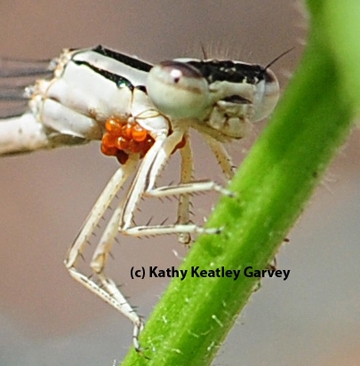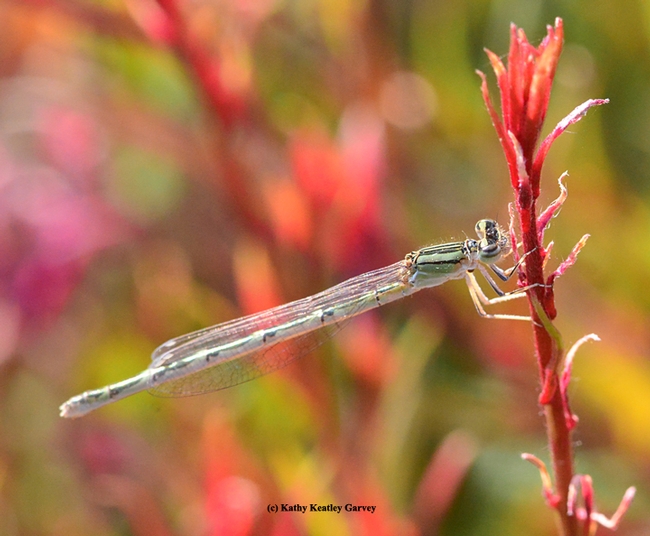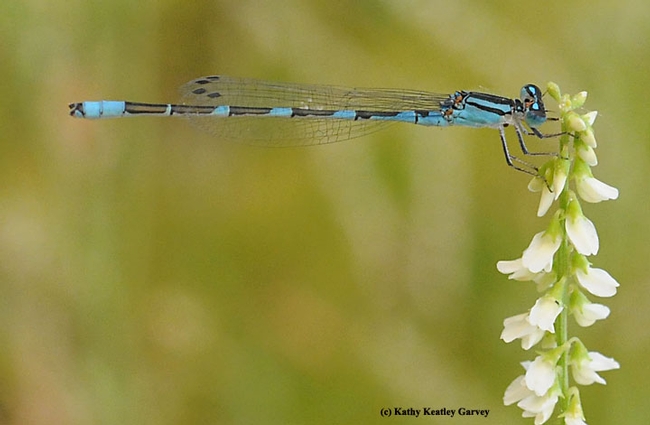
The result was a good one: more damselflies.
Damselflies lay their eggs in water, whether it be a pond, underwater vegetation, or in water-filled cavities in trees. If they lay their eggs in a fish pond, fish feast on the eggs and larvae.
But not this year, not in our pond. One egret. No fish. And now damselflies are no longer in distress.
On any given day, 20 to 25 damselflies flit around our bee garden, searching for food as they land on the stems of the Mexican sunflower (Tithonia), catmint (Nepata), and oregano (Origanum).
They also search for mates and occasionally collide with a bee or butterfly.
Most of the damselflies we see carry the parasitic water mites (Hydracarina), which look like red caviar.

Damselfles and dragonflies belong to the same order, Odonata. Damselflies, however, are typically much smaller than their dragonfly cousins. Wikipedia tells us that damselflies, suborder Zygoptera, can be distinguished from dragonflies "by the fact that the wings of most damselflies are held along, and parallel to, the body when at rest. Furthermore, the hindwing of the damselfly is essentially similar to the forewing, while the hindwing of the dragonfly broadens near the base.
We've never seen a damselfly eat anything or anything eat the damselfly, although our resident praying mantis seemed quite interested--or perturbed--when a damselfly bumped into him.
Attached Images:

Damselfly with water mites (see egglike mass). The insect next to it is probably thrips, according to Lynn Kimsey, director of the Bohart Museum of Entomology, UC Davis. (Photo by Kathy Keatley Garvey)

Damselfly resting in the garden. (Photo by Kathy Keatley Garvey)

A blue damsefly brightens the garden. (Photo by Kathy Keatley Garvey)